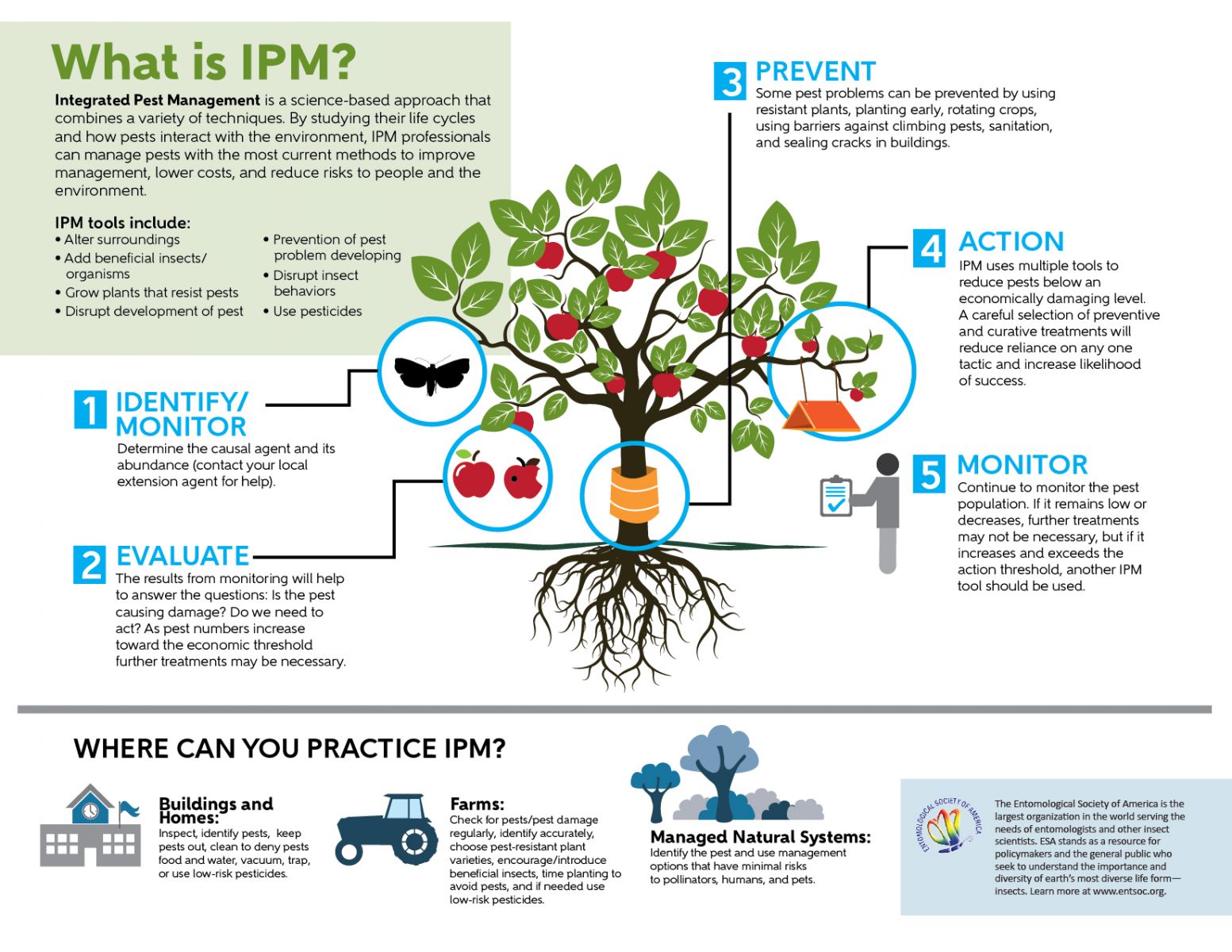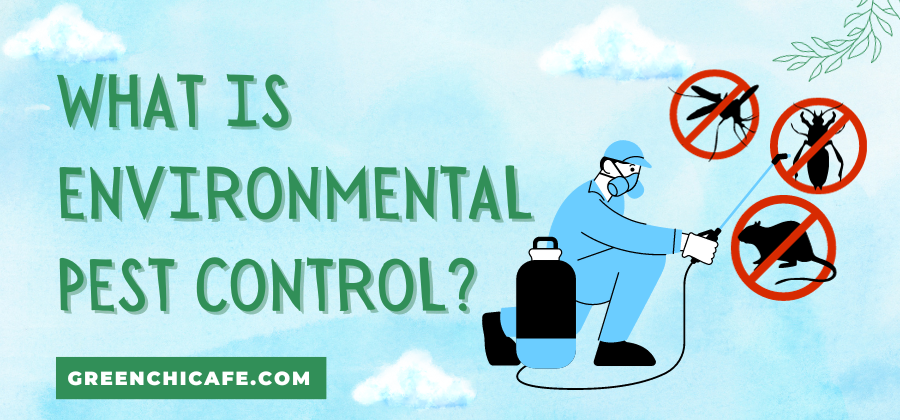Last Updated on June 3, 2024 by Annie Baldwin
Environmental Pest Management is a leading residential and commercial pest control company based in Las Vegas, NV.
It delivers exceptional pest control services with minimum impact on the environment.
With over 30 years of experience and a robust infrastructure, their team of experts can quickly resolve any seasonal or emergency pest issues while protecting the health and safety of your home or business.
What Is Environmental Pest Control?

Environmental pest control focuses on sustainable, eco-friendly pest management strategies that protect ecosystems.
It emphasizes using natural predators, barriers, habitat modification, growth regulators, and avoiding broad chemical pesticides.
The goal is to find an integrated approach that effectively controls pests while minimizing environmental damage.
Key Points
- Uses eco-friendly methods like biological control and growth regulators
- Avoids the broad application of chemical pesticides
- Seeks to find a balance that protects ecosystems
Our Opinion
Environmental pest control allows effective management of pests like cockroaches and rats issues while preserving a healthy environment.
By using an integrated approach focused on sustainability, ecosystems can be protected from damage.
Understanding these eco-friendly principles is key for modern pest control.
Eco-Friendly Pest Control Methods

Environmental pest control utilizes a variety of eco-friendly methods and products to get rid of pests like spiders without harming you or the environment.
- Physical barriers like screens, caulking, door sweeps, and weather stripping keep pests out of structures.
- Sanitation eliminates food sources and breeding sites that invite pests in mice into your homes. Proper waste management and cleaning up clutter such as stacks of cardboard can solve most pest issues.
- Traps that don’t use chemicals, like pheromones or sticky traps, can capture and kill pests.
- Biological controls like beneficial insects or microbial pesticides provide natural predation.
- Botanical oils and soaps derived from plants can repel or kill insects.
- Thermal treatments like heat or cold treatment can eliminate certain pest populations.
- Targeted application of boric acid powders and gels provides low-toxicity pesticide options.
At Environmental Pest Management, our experts use integrated pest management to combine a variety of eco-friendly methods for effective and sustainable results. We aim to avoid the use of harmful pesticides unless absolutely necessary. Our goal is to implement solutions that are safe for you, your family, and the environment.
Benefits of Minimizing Pesticide Use
Using less toxic pesticides provides many advantages for your home and health.
- Reduces possible health risks associated with pesticide exposure, especially for children and pets.
- Prevents contamination of food supplies, drinking water, and ecosystems.
- Lower risk of pesticide resistance developing in pest populations.
- Saves money by focusing on prevention and natural control methods.
- Supports populations of beneficial insects like ladybugs and bees.
- Maintains biodiversity and ecological balance.
At Environmental Pest Management, we believe minimizing pesticide use is crucial for the well-being of our customers and the environment. Our experts exhaust all other options first and only use the least toxic chemicals when absolutely needed. We aim to provide effective pest control that keeps your family safe and promotes a healthy home.
Integrated Pest Management Techniques

There are many innovative techniques we use to control pests without excessive pesticide use, known as integrated pest management (IPM).
IPM involves:
- A thorough inspection to identify all pest issues and entry points.
- Targeted treatments focused on the source of infestations.
- Sealing cracks and crevices pests are used to enter the home.
- Modifying environmental conditions to deter pests.
- Using traps and baits as monitoring tools.
- Applying pesticides only when necessary is a last resort.
At Environmental Pest Management, our technicians are highly trained in the latest IPM methods. We aim to resolve pest issues using the most environmentally responsible techniques. By taking an integrated approach, we can deliver effective control while minimizing any impacts on your family’s health and the environment.
How to Choose an Eco-Friendly Pest Control Company
When selecting a pest control company, look for one that prioritizes environmentally responsible treatments. Here are some tips on identifying a truly eco-friendly provider:
- Ask about their IPM process and avoidance of broadcast spraying.
- Look for green certifications like GreenPro to validate their commitment.
- Review which pesticides they use and opt for biorationals when possible.
- Make sure they customize treatments for your specific situation.
- Ask if they offer preventative modifications like sealing entry points.
- Verify they are licensed and have advanced training in IPM methods.
- Request to see labels and SDS sheets for any pesticides to be used.
The best green pest control companies will be transparent about their treatment plans and products. They will take time to educate you on options and only use pesticides judiciously when needed. This thoughtful approach means you get effective solutions that protect your home in an eco-friendly way.
FAQ
How bad is pest control for the environment?
Pest control can have negative impacts on the environment if harsh chemicals are used. However, there are more eco-friendly methods available like using natural predators, barriers, and growth regulators that are less harmful.
What Are Some Examples of Pest Control?
Common pest control methods include chemical pesticides, biological control using natural predators, physical barriers like nets or traps, habitat modification, and growth regulators that disrupt pest development.
What Is the Definition of Pest Control in Environmental Science?
Environmental pest control focuses on managing pests through methods that minimize environmental impact. This involves using chemicals selectively, introducing natural predators, modifying habitats, and other strategies that protect ecosystems.
Which Is the Most Environmentally Friendly Method of Insect Control?
Biological control using natural predators and parasites of pest species is generally considered the most eco-friendly insect control method. This allows nature to regulate itself without excessive human intervention.
Conclusion
Environmental pest control emphasizes sustainable, eco-friendly strategies to manage pests while preserving a healthy environment. This involves using natural predators, barriers like nets, habitat modification, growth regulators, and avoiding broad chemical pesticides. The goal is to find a balance that protects ecosystems from damage. Understanding integrated pest management principles allows effective control with minimal environmental impact.
